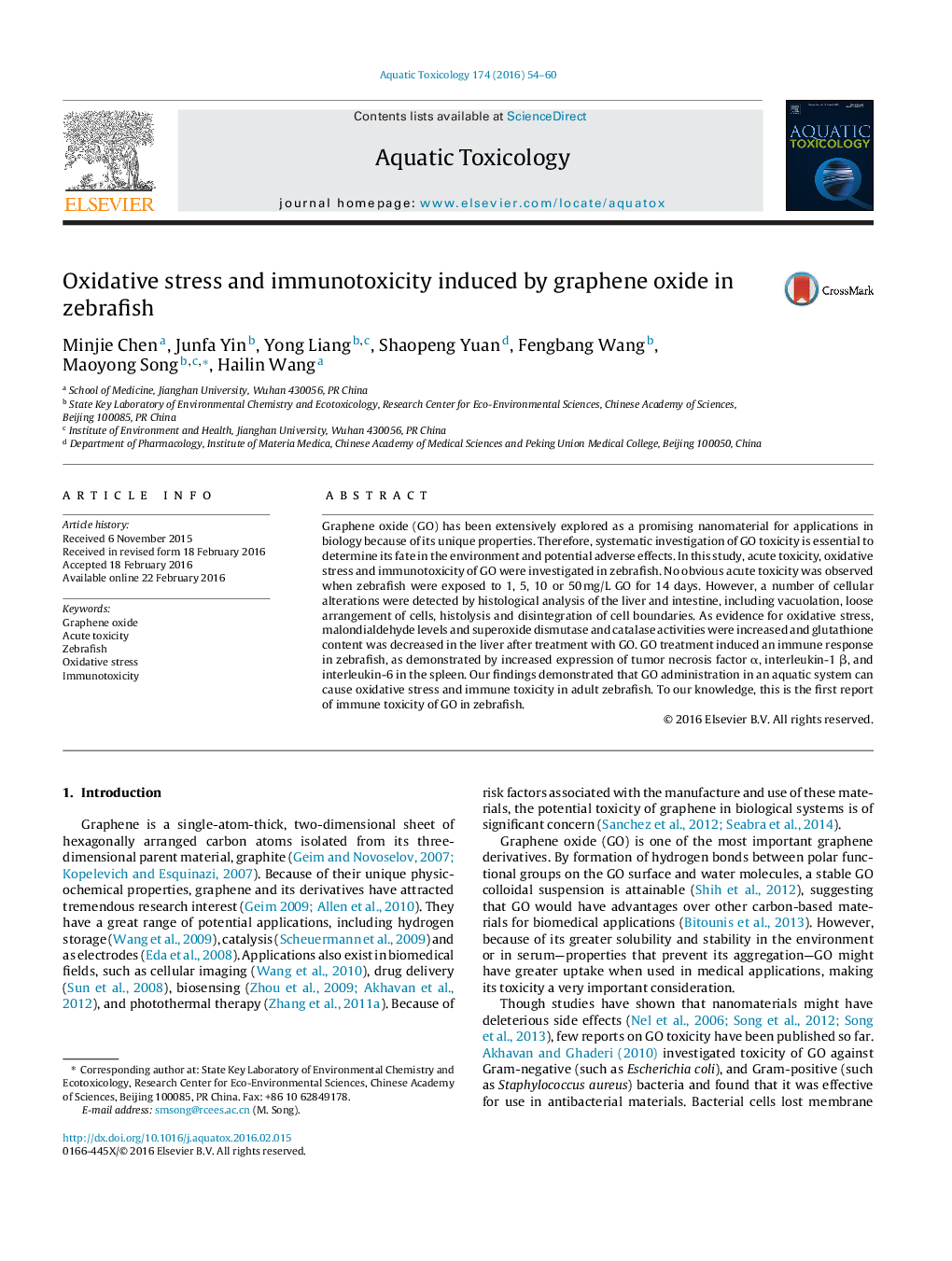| Article ID | Journal | Published Year | Pages | File Type |
|---|---|---|---|---|
| 6381891 | Aquatic Toxicology | 2016 | 7 Pages |
â¢No obvious acute toxicity was observed when zebrafish were exposed to 50 mg/L GO.â¢Graphene oxide induces oxidative stress in adult Zebrafish.â¢Graphene oxide induces expression of inflammatory cytokines in adult zebrafish.â¢Graphene oxide induces histopathological lesions in adult zebrafish.
Graphene oxide (GO) has been extensively explored as a promising nanomaterial for applications in biology because of its unique properties. Therefore, systematic investigation of GO toxicity is essential to determine its fate in the environment and potential adverse effects. In this study, acute toxicity, oxidative stress and immunotoxicity of GO were investigated in zebrafish. No obvious acute toxicity was observed when zebrafish were exposed to 1, 5, 10 or 50 mg/L GO for 14 days. However, a number of cellular alterations were detected by histological analysis of the liver and intestine, including vacuolation, loose arrangement of cells, histolysis and disintegration of cell boundaries. As evidence for oxidative stress, malondialdehyde levels and superoxide dismutase and catalase activities were increased and glutathione content was decreased in the liver after treatment with GO. GO treatment induced an immune response in zebrafish, as demonstrated by increased expression of tumor necrosis factor α, interleukin-1 β, and interleukin-6 in the spleen. Our findings demonstrated that GO administration in an aquatic system can cause oxidative stress and immune toxicity in adult zebrafish. To our knowledge, this is the first report of immune toxicity of GO in zebrafish.
